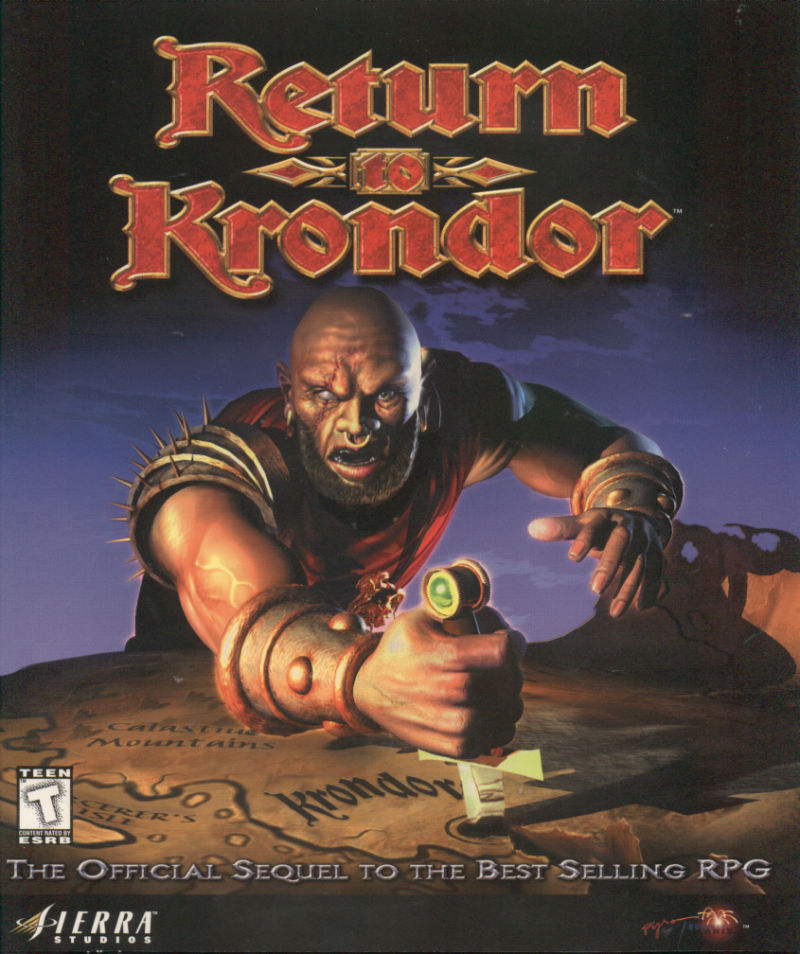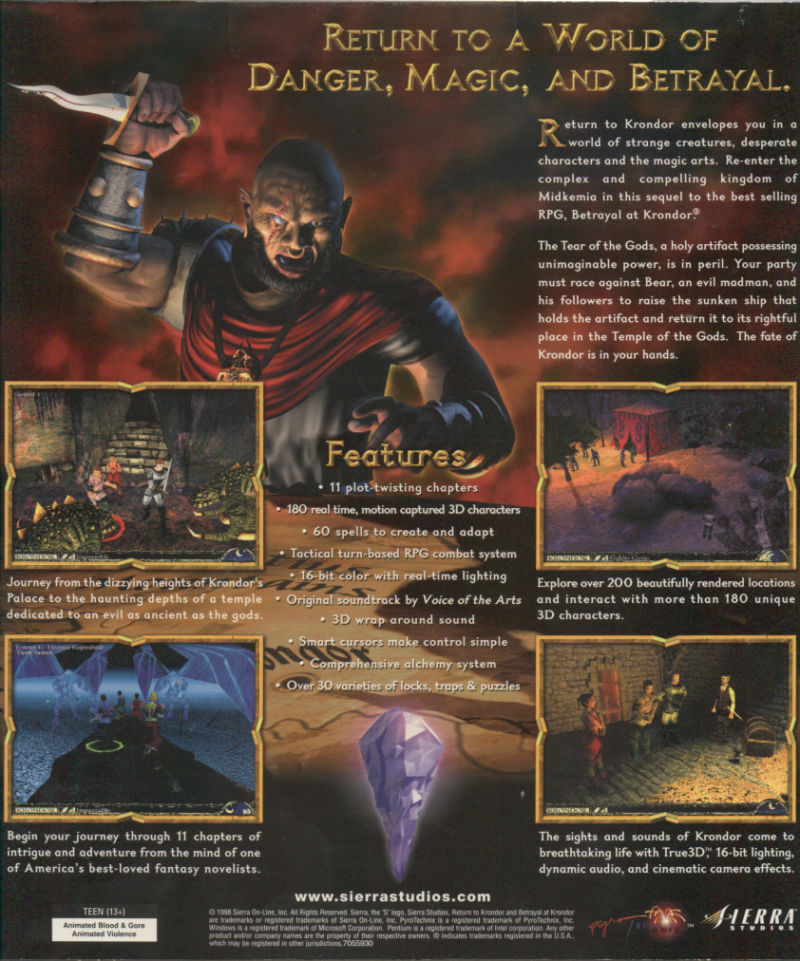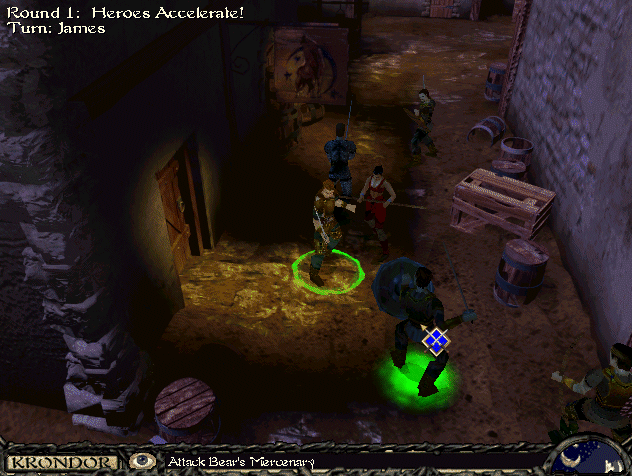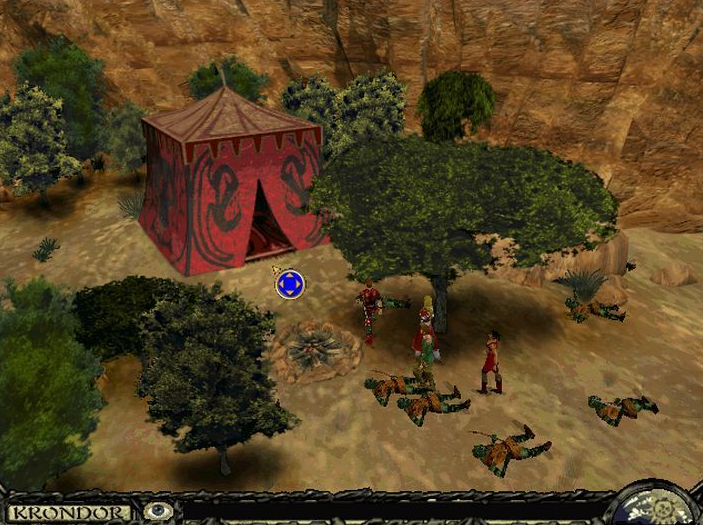The direct sequel to Betrayal at Krondor, Return to Krondor takes the player back to the fantasy world of Midkemia, which is once more in peril.
It all begins when James – once a thief and now a squire of Krondor – is sent by Prince Arutha to escort the court magician Jazhara to the palace. Shortly afterwards they meet William ConDoin, a fearless swordsman and the son of the famous magician Duke Pug. A ruthless mercenary named Bear sends his men to murder the woman William loves. It appears that Bear is in pursuit of the Tear of the Gods, a holy artifact of immense power. James and his friends follow the trail of death and destruction Bear has left in his wake and to stop him before he reaches the Tear. As they progress in their travels they discover that someone or something is creating dark beings and horrible perversions of nature, suggesting that things are very wrong in Krondor besides the ambitions of a single renegade mercenary.
Return to Krondor features pre-rendered backgrounds with changing camera angles for exploration, and 3D character models. Battles occur when contact is made with a hostile character, and are turn-based, including the tactical element of moving the characters manually over the battle field. The player controls James and three other characters who join the party. Compared to its predecessor, the game is less heavy on exploration, having smaller and more confined areas. Much of the game takes place in the city of Krondor, which is divided into several districts; later in the game the player gains access to other locations, though it is impossible to physically explore the overworld. Several side quests, however, are still available, in addition to pursuing the main storyline.
Unlike its predecessor, the game features a more common leveling up system where characters gain a set amount of skill points after having accumulated enough experience to level up. These skill points are allocated manually by the player to increase the characters’ weapon proficiencies, defense, spellcasting, etc. The game also allows the player to brew potions via an alchemy system, and features a detailed lockpicking minigame that involves choosing between several available tools and applying them to the lock.
Cover Art:
Screenshots:





